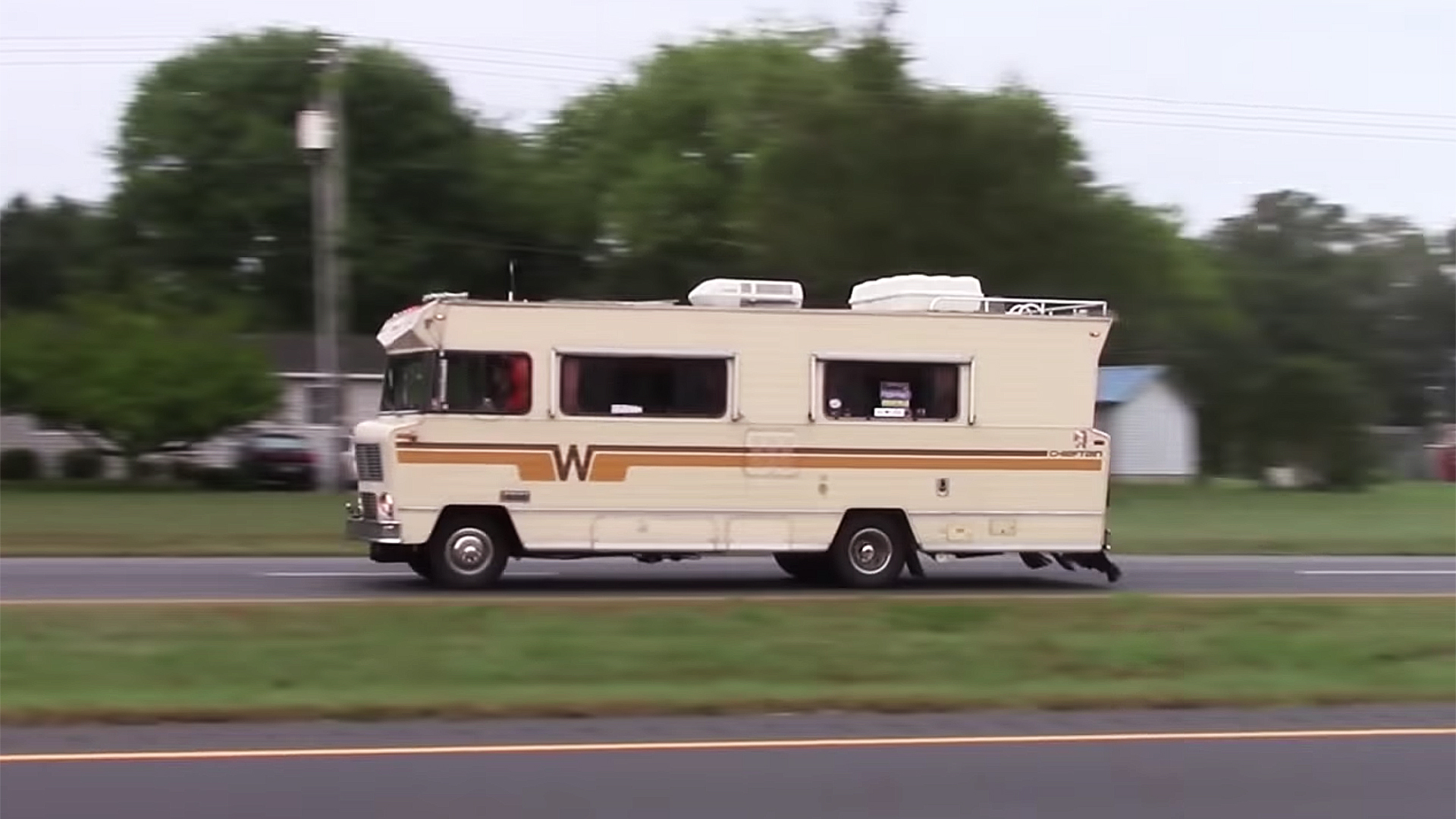

America’s long tradition of hitting the open highway in a big, lumbering RV has always run into one big roadblock: those things are slow. That’s probably for the best considering we’re talking about a one-bedroom apartment on wheels with minimal crash protection. But more grunt is always a good thing, and this turbo LS-swapped 1978 Winnebago hits that patriotic power chord like few projects before it.
Justin Kramer of the Fuel Injection Sucks YouTube channel recently took his boosted Winnie out for a 400-mile inaugural shakedown run after a summer of work saw the old RV undergo a heart transplant. Originally built on a Dodge M400 truck chassis and powered by an anemic 7.2-liter 440 Chrysler engine, the 1978 Winnebago Chieftain now runs a 6.0-liter turbocharged LS V8 as it gets ready to prowl the country’s campsites.

There are seven videos in all documenting the six-month process (which we encourage you to watch in their entirety, if only for Kramer’s affable and informative style) which looks to have run into the same trials and tribulations as a normal engine swap. There are clearance issues with the oil pan and the new 4L80-E transmission, a lot of custom plumbing and wiring, fuel problems, a finicky tune…and ultimately, victory.

The Winnebago was in surprisingly good shape when he and his friends got their hands on it, and the shag-heavy 70’s interior survived the swap in all its faux wood glory. One benefit to the design is that the engine is accessed through a hatch between the front seats, which was removed for diagnostic purposes during early test drives. Nothing like hitting the open road with you, your pals, and a churning V8 in the cabin.

There are still some things to fine tune—you’ll notice a lot of steering wheel shake in the last video—but overall it looks fairly complete. No word on performance data yet, though we doubt its spec sheet will lead to any speed records. But that’s not really the point: this 40-year-old RV now has all the passing power it needs to keep up with modern traffic, arguably making it safer to drive today.
Doesn’t hurt that it sounds fantastic from the outside, either. The rumble, the turbo, the wastegate—if RV companies want to get millennials in on the new sales boom, this isn’t a bad place to start.